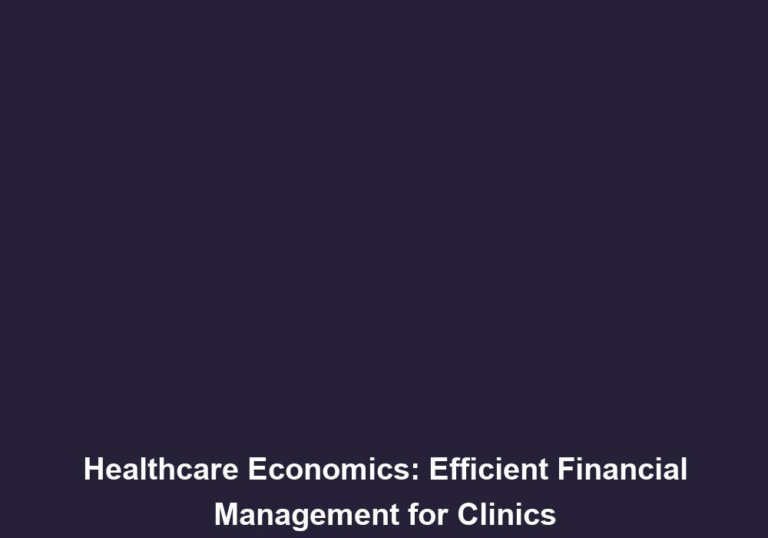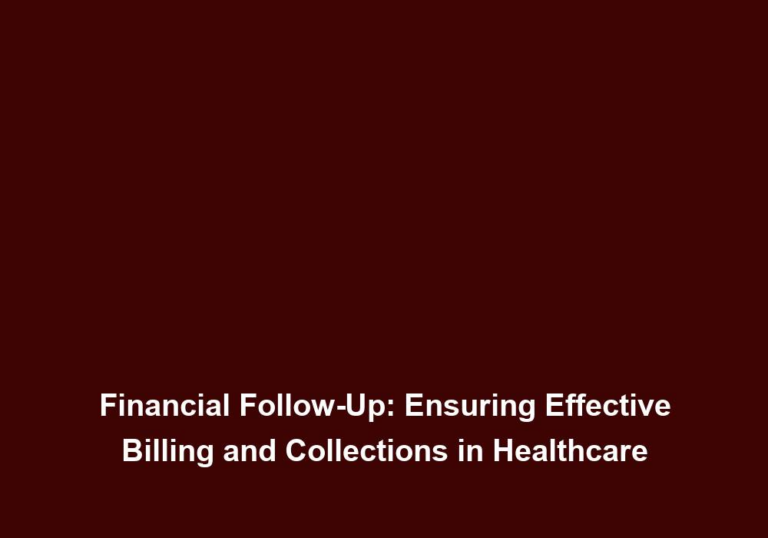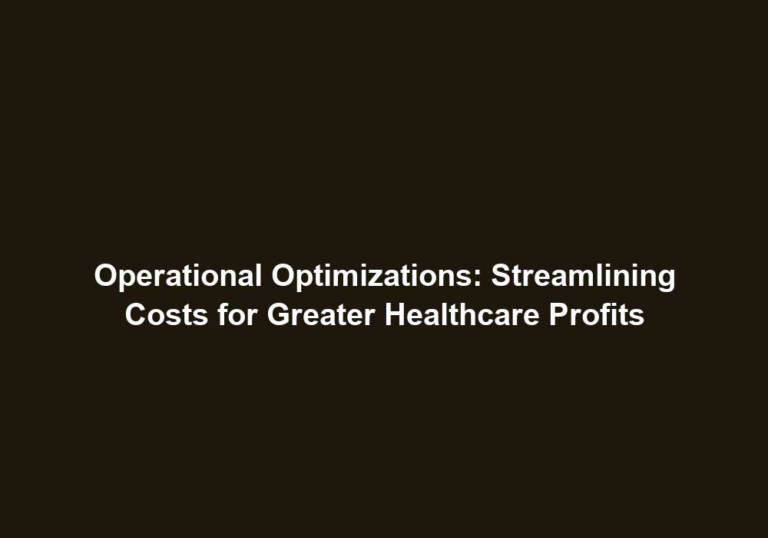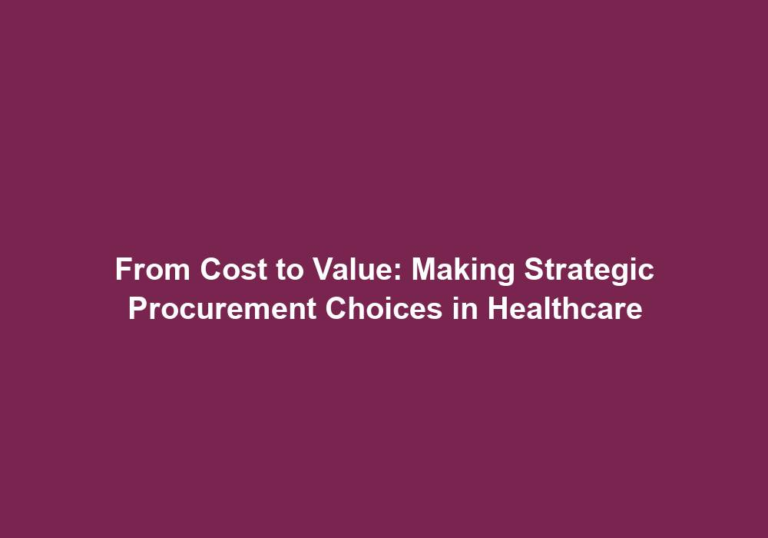Navigating Numbers: Budgeting and Forecasting in Medical Practices
Budgeting and forecasting play a crucial role in the success and sustainability of medical practices. As healthcare providers, it is essential to have a solid grasp of financial management to ensure the efficient allocation of resources, maximize revenue, and maintain profitability. In this article, we will explore the importance of budgeting and forecasting and provide valuable insights into how medical practices can navigate the numbers effectively.
Introduction
Budgeting and forecasting are essential financial management practices for medical practices. They help guide decision-making, allocate resources efficiently, and ensure financial stability. By understanding the significance of budgeting and forecasting, medical practices can effectively manage their finances and achieve long-term success.
Understanding Budgeting in Medical Practices
Definition and Purpose
Budgeting refers to the process of creating a financial plan that outlines expected revenues and expenses over a defined period. In the context of medical practices, budgeting helps guide financial decision-making and resource allocation. It provides a roadmap for managing expenses, monitoring cash flow, and identifying potential areas for cost reduction or revenue improvement.
Key Components of a Budget
-
Revenue Projections: Medical practices need to estimate their expected revenue based on various factors such as patient volume, services provided, and reimbursement rates. This includes both fee-for-service and value-based payment models. Accurate revenue projections enable practices to plan their operations effectively and identify opportunities for revenue growth.
-
Expense Categories: Categorizing expenses into different categories such as personnel costs, supplies, equipment, facility expenses, marketing, and technology is crucial. This categorization helps in identifying areas of overspending or potential savings. By analyzing expenses in detail, medical practices can make informed decisions about cost reduction strategies and resource allocation.
-
Personnel Costs: Personnel costs typically constitute a significant portion of a medical practice’s budget. This includes salaries, benefits, and payroll taxes for physicians, nurses, administrative staff, and other healthcare professionals. Managing personnel costs efficiently is essential for maintaining financial stability while ensuring quality patient care.
-
Capital Expenditures: Capital expenditures involve investments in equipment, technology, and facility improvements. These expenses should be budgeted and planned strategically to ensure the long-term sustainability of the practice. By forecasting capital expenses and incorporating them into the budget, medical practices can make informed decisions about investments and prioritize spending.
-
Non-Operating Expenses: Non-operating expenses include items like insurance, legal fees, and professional memberships. These costs should be accounted for in the budget to avoid surprises and maintain financial stability. By including non-operating expenses in the budget, medical practices can accurately assess their overall financial health and plan accordingly.
Benefits of Effective Budgeting
Efficient budgeting provides several benefits to medical practices:
-
Financial Control: Budgeting allows practices to maintain better control over their finances by establishing spending limits and monitoring variances between actual and projected expenses. This control enables practices to make adjustments when necessary and ensures that financial goals are met.
-
Identification of Opportunities: By analyzing budget data, medical practices can identify opportunities for growth, cost reduction, and revenue enhancement. This could include strategies such as expanding services, renegotiating contracts with suppliers, or implementing cost-effective technology solutions. By leveraging budget information, practices can make data-driven decisions that lead to positive outcomes.
-
Resource Allocation: A well-prepared budget helps in allocating resources effectively, ensuring that all essential areas of the practice receive adequate funding. It prevents overspending in certain areas while neglecting others. By aligning resource allocation with strategic goals, medical practices can optimize their operations and improve overall performance.
-
Better Decision Making: Budgeting provides healthcare providers with the necessary information to make informed decisions about practice operations, investments, and strategic planning. It serves as a benchmark against which actual performance can be evaluated. By regularly reviewing budget performance, practices can identify areas that require improvement and take corrective actions accordingly.
Forecasting for Success
Definition and Purpose
Forecasting in medical practices involves projecting future financial performance based on historical data, industry trends, and anticipated changes in the healthcare landscape. It helps practices anticipate potential challenges and identify opportunities for growth. Forecasting provides valuable insights into the financial health of the practice and enables proactive decision-making.
Key Components of Forecasting
-
Historical Data Analysis: Analyzing past financial performance provides a foundation for accurate forecasting. Practices can identify trends, seasonal fluctuations, and any factors that may have influenced revenue and expenses in the past. By understanding historical data, practices can make informed predictions about future financial outcomes.
-
External Factors: Forecasting also takes into account external factors such as changes in reimbursement policies, healthcare regulations, and market dynamics. These factors can significantly impact a practice’s financial outlook. By staying updated on industry trends and regulatory changes, practices can adjust their forecasts accordingly and prepare for potential financial implications.
-
Patient Volume Projections: Forecasting patient volume is crucial for estimating revenue. This involves analyzing historical patient data, referral patterns, population demographics, and changes in insurance coverage. Accurate patient volume projections enable practices to plan their resources effectively and ensure optimal patient care.
-
Expense Projections: Similar to revenue projections, forecasting expenses is essential for effective financial planning. Practices need to consider factors such as inflation, changes in reimbursement rates, and any anticipated increases in expenses. By accurately forecasting expenses, practices can make informed decisions about resource allocation and budget management.
Benefits of Effective Forecasting
Accurate forecasting offers several advantages to medical practices:
-
Financial Preparedness: By accurately predicting future revenue and expenses, practices can be financially prepared for any potential challenges or opportunities. This allows for proactive measures to be taken to ensure stability and growth. Preparedness enables practices to adapt to changing market conditions and maintain financial resilience.
-
Strategic Decision Making: Forecasts provide valuable insights for making strategic decisions, such as expanding services, hiring additional staff, or investing in new technologies. It helps practices align their long-term goals with financial realities. By basing decisions on accurate forecasts, practices can pursue growth opportunities while managing risks effectively.
-
Risk Assessment: Forecasting allows practices to identify potential risks and take proactive measures to mitigate them. For example, if a predicted decline in patient volume is anticipated, the practice can develop strategies to attract new patients or retain existing ones. Risk assessment through forecasting enables practices to develop contingency plans and minimize financial uncertainties.
-
Benchmarking Performance: By comparing actual financial performance against forecasts, practices can assess their effectiveness in meeting financial goals. It helps identify areas for improvement and course correction if necessary. By regularly evaluating performance, practices can optimize their financial strategies and strive for continuous improvement.
Conclusion
Budgeting and forecasting are indispensable tools for medical practices aiming to achieve financial stability, maximize revenue, and make informed business decisions. By effectively navigating the numbers through budgeting and forecasting, healthcare providers can allocate resources efficiently, identify growth opportunities, and proactively address financial challenges. Embracing these financial management practices will ultimately contribute to the long-term success and sustainability of medical practices.







